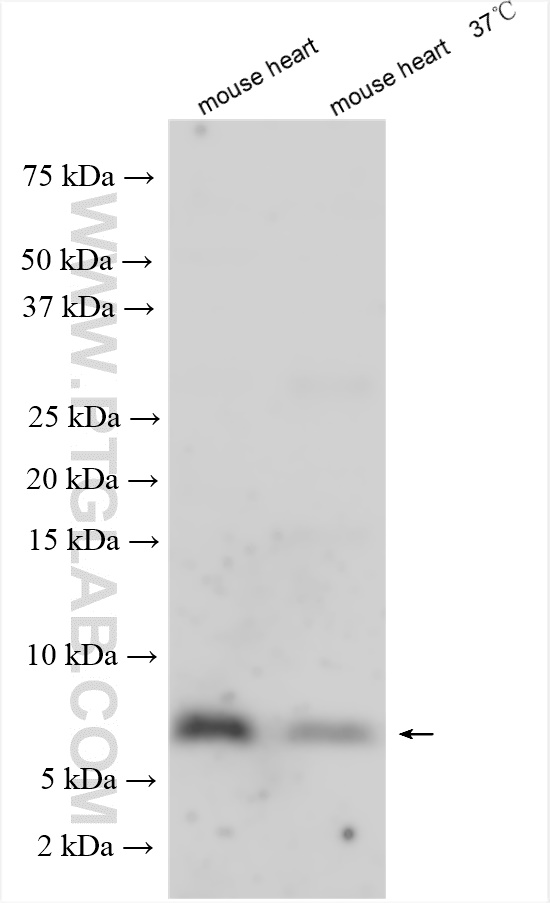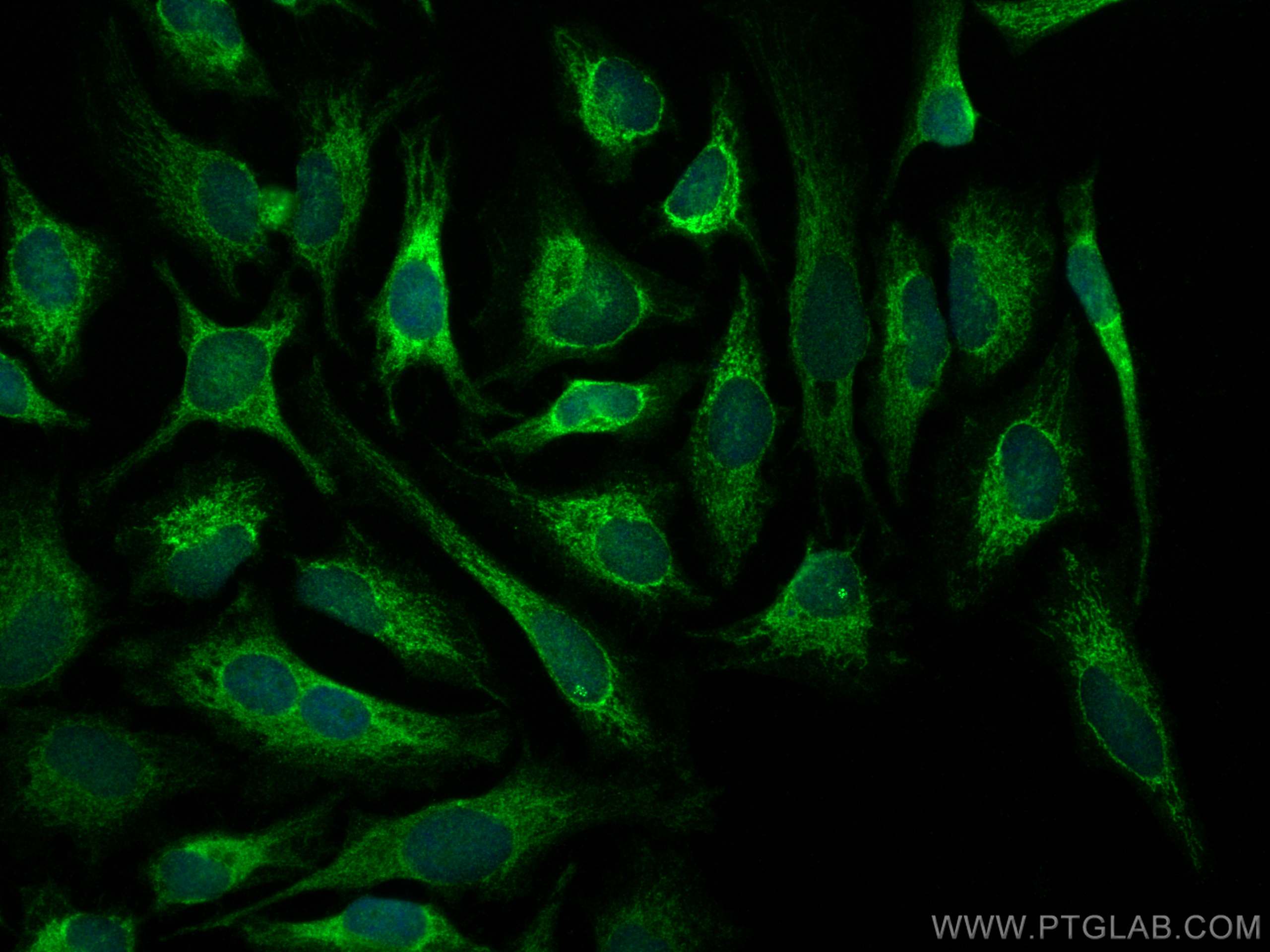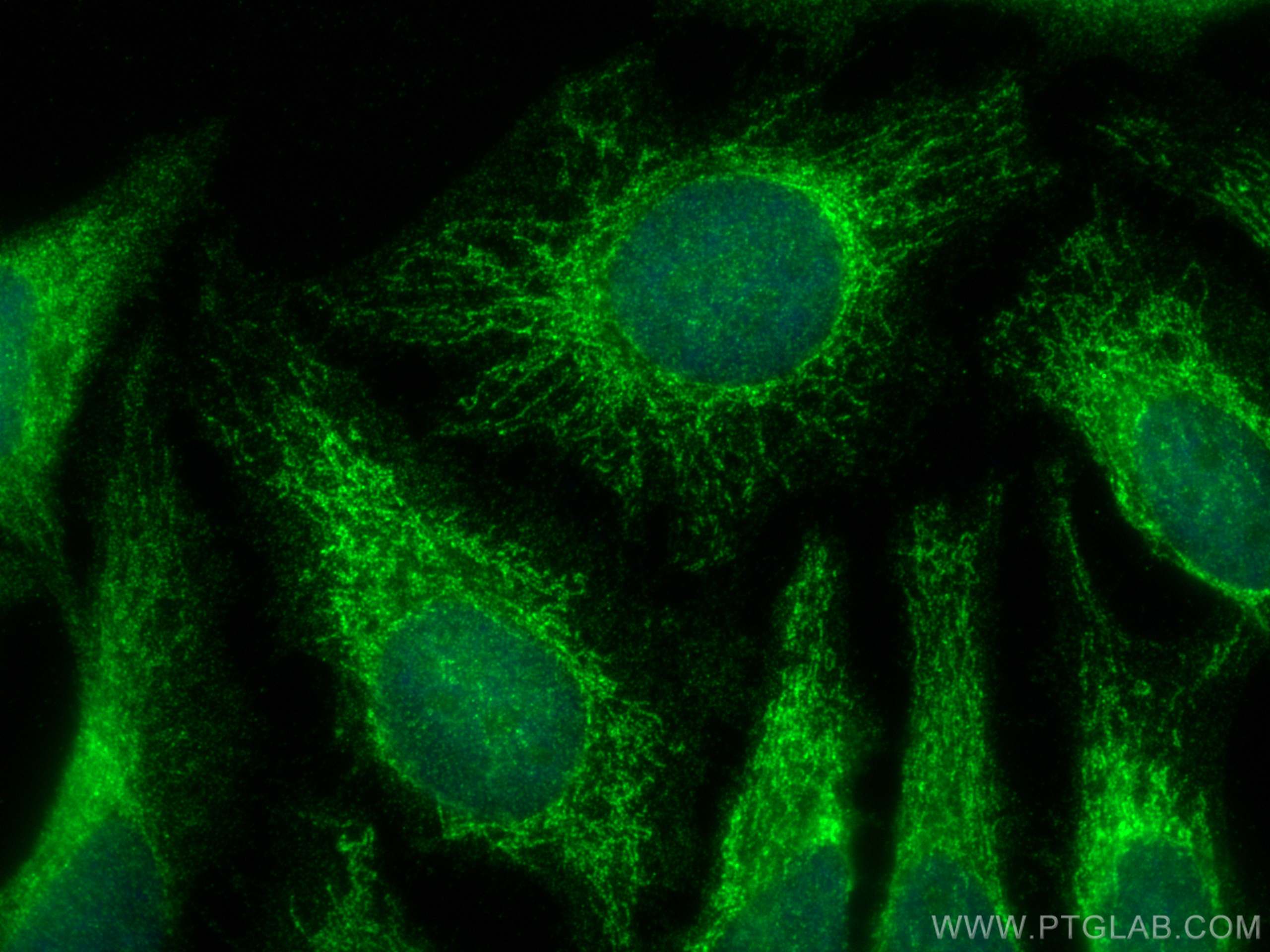验证数据展示
经过测试的应用
| Positive WB detected in | mouse heart tissue, 37℃ incubated mouse heart tissue |
| Positive IF/ICC detected in | HeLa cells |
推荐稀释比
| 应用 | 推荐稀释比 |
|---|---|
| Western Blot (WB) | WB : 1:1000-1:4000 |
| Immunofluorescence (IF)/ICC | IF/ICC : 1:200-1:800 |
| It is recommended that this reagent should be titrated in each testing system to obtain optimal results. | |
| Sample-dependent, Check data in validation data gallery. | |
产品信息
15408-1-AP targets ATP5E in WB, IF/ICC, ELISA applications and shows reactivity with human, mouse samples.
| 经测试应用 | WB, IF/ICC, ELISA Application Description |
| 经测试反应性 | human, mouse |
| 免疫原 |
CatNo: Ag7672 Product name: Recombinant human ATP5E protein Source: e coli.-derived, PGEX-4T Tag: GST Domain: 1-51 aa of BC001690 Sequence: MVAYWRQAGLSYIRYSQICAKAVRDALKTEFKANAEKTSGSNVKIVKVKKE 种属同源性预测 |
| 宿主/亚型 | Rabbit / IgG |
| 抗体类别 | Polyclonal |
| 产品类型 | Antibody |
| 全称 | ATP synthase, H+ transporting, mitochondrial F1 complex, epsilon subunit |
| 别名 | ATPE, ATP5F1E, ATP synthase F1 subunit epsilon |
| 计算分子量 | 6 kDa |
| 观测分子量 | 6 kDa |
| GenBank蛋白编号 | BC001690 |
| 基因名称 | ATP5E |
| Gene ID (NCBI) | 514 |
| RRID | AB_3085461 |
| 偶联类型 | Unconjugated |
| 形式 | Liquid |
| 纯化方式 | Antigen affinity purification |
| UNIPROT ID | P56381 |
| 储存缓冲液 | PBS with 0.02% sodium azide and 50% glycerol, pH 7.3. |
| 储存条件 | Store at -20°C. Stable for one year after shipment. Aliquoting is unnecessary for -20oC storage. |
背景介绍
ATP synthase epsilon subunit (ATP5E) is an important subunit of ATP synthase, which is located in the stalk region of the F1 sector. F1-ATPase is the catalytic portion of mitochondrial ATP synthase, which produces ATP from ADP and inorganic phosphate (Pi). ATP5E is widely expressed in tissues. The calculated molecular weight of ATP5E is 6 kDa (PMID: 36625260).
实验方案
| Product Specific Protocols | |
|---|---|
| IF protocol for ATP5E antibody 15408-1-AP | Download protocol |
| WB protocol for ATP5E antibody 15408-1-AP | Download protocol |
| Standard Protocols | |
|---|---|
| Click here to view our Standard Protocols |




